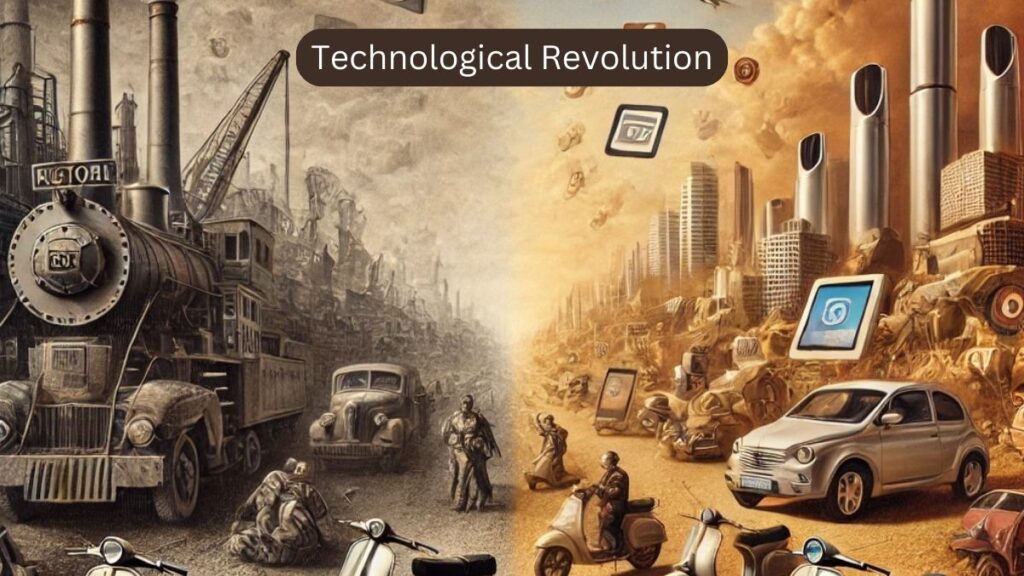
Surviving the Technological Revolution By Learning Lessons from Fallen Giants
Technological Revolution: Do you remember the Kodak Company? Back in 1997, Kodak employed approximately 160,000 people and dominated the photography industry, with about 85% of the world’s photos being taken on Kodak cameras. However, as mobile phone cameras surged in popularity, Kodak’s once-mighty grip on the market slipped away. Eventually, Kodak went bankrupt, and thousands of employees lost their jobs. This same fate befell several other well-known companies around the same time. Companies such as:
– HMT (watches)
– Bajaj (scooters)
– Dyanora (televisions)
– Murphy (radios)
– Nokia (mobile phones)
– Rajdoot (motorbikes)
– Ambassador (cars)
The fall of these companies wasn’t due to poor product quality. Instead, they failed to adapt to changing times and evolving consumer needs. In today’s fast-moving world, change is inevitable, and companies that don’t evolve risk extinction. From where we stand now, it’s hard to imagine just how different the world might look in the next 10 years. Experts predict that a staggering 70% to 90% of today’s jobs may disappear within that time frame as we transition into the era of the “Fourth Industrial Revolution.”
Consider the companies that dominate today’s landscape. UBER, for example, is now the world’s largest ride-hailing company, yet it doesn’t own a single car. Similarly, Airbnb has become the biggest accommodation provider globally, even though it doesn’t own any hotels. Companies like Paytm, Ola, and Oyo Rooms represent new business models driven by technology rather than physical assets.
Technological Revolution: How AI is Redefining the Job Market and Reshaping the Future
The rapid advancement of technology is also reshaping the job market. For example, in the United States, many new lawyers struggle to find work because IBM Watson, a legal software, can handle legal tasks more efficiently than a novice lawyer.
The rise of artificial intelligence (AI) could leave around 90% of Americans without jobs in the next decade. Only about 10% of workers, those who specialize in areas where AI can’t easily replace them, are expected to keep their positions. Similarly, even the medical field is feeling the impact of AI. Software like Watson can diagnose cancer and other illnesses with up to four times the accuracy of human doctors. By 2030, many experts predict that computer intelligence will surpass human intelligence.
Technological Revolution: The Future of Transportation and the End of Traditional Driving
The future of transportation also paints a picture of dramatic change. Within the next 20 years, around 90% of today’s cars will vanish from the roads, replaced by electric or hybrid vehicles. The streets will become less crowded, reducing the need for gas. Consequently, oil consumption will decrease, which could lead to economic struggles for oil-dependent countries.
In this future, personal car ownership might become obsolete. Instead, people will summon driverless cars through apps like Uber. These autonomous vehicles will come straight to your door, eliminating the need for human drivers. And if you carpool, the fare per passenger could be cheaper than owning and maintaining a bike. Since driverless cars are expected to reduce accidents by 99%, insurance companies might become unnecessary, leading to a decline in the insurance industry.
With far fewer cars on the roads, the roles of traffic police and parking attendants could disappear too. Driving, as we know it, might cease to exist. It’s reminiscent of the shift we’ve already seen with STD booths. Just a decade ago, STD booths lined the streets, but with the rise of mobile phones, these booths became obsolete. Some booths adapted, becoming mobile recharge shops. However, with the convenience of online recharge services, even those shops are now struggling to survive. Increasingly, mobile phones are purchased directly through platforms like Amazon and Flipkart.
The very nature of money is also evolving. Not too long ago, cash was the dominant form of payment. Then came credit and debit cards, or “plastic money.” But even that is now being phased out in favor of mobile wallets. Paytm and other similar services have revolutionized how we handle money, making financial transactions as simple as a tap on a screen.
The key takeaway from all of this is that those who fail to adapt to the ever-changing times will be left behind. To survive in this rapidly evolving world, both individuals and businesses must continuously evolve. The pace of change is relentless, and those who don’t keep up risk becoming obsolete. So, keep learning, adapting, and moving forward with the times.
To read more topics, please visit: https://insightfulbharat.com

